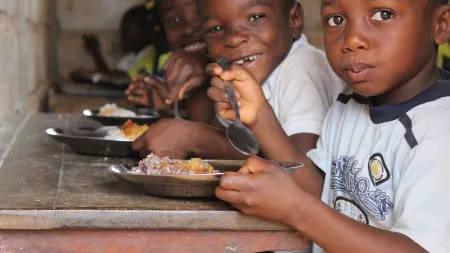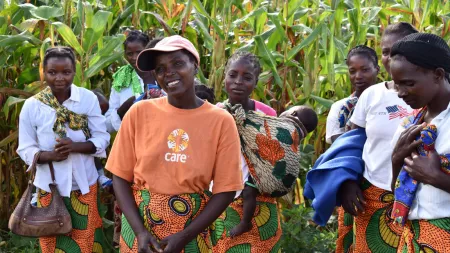The impact of malnutrition
Globally, about 8.9% of the world’s population, 690 million people, are malnourished. The economic, food, water, and health system disruptions resulting from the COVID-19 pandemic continue to worsen all forms of malnutrition. In 2020, it was estimated that up to 811 million people faced hunger, up to 161 million more than the year before. With conflicts such as the Ukraine War creating additional pressure on food systems around the world, the state of food security remains critical.
Even before COVID-19, wasting, stunting, obesity, and micronutrient deficiency rates were growing. In many regions, poor nutrition is on the rise. The total number of people affected by moderate or severe food and nutrition insecurity means an estimated two billion people do not have regular access to safe, nutritious, and sufficient food. This food deficit, and its impacts on malnutrition, are often worsened by limited access to resilient water, sanitation, and hygiene (WASH) in humanitarian situations.
Healthy diets are unaffordable to many in every region of the world. Malnutrition is expected to increase due to the pandemic as well in line with decreased access to health and nutrition services.
Malnutrition affects every stage of life and can impact generations. Malnourished mothers are more likely to die in childbirth and have low birth-weight babies. Chronically malnourished children face stunting (low height-for-age ratios) as a result of chronic or recurrent undernutrition. This can result in lifelong consequences in reduced mental or physical capacity, lower learning potential in school, and reduced lifetime earnings.
What is CARE International doing to increase accessibility to nutrition?
CARE International addresses the cause of malnutrition by providing food and nutritional support to vulnerable families. We address the underlying causes of poverty, including the lack of access to livelihoods and to clean water and sanitation, and the lack of control over land and natural resources.
We focus on reducing gender equality because experience shows us that malnutrition can be diverted when women are empowered. We also work closely with governments to support long-term political commitment to address malnutrition and allocate resources for lasting improvements.
At the community level, we work to improve nutrition through local collectives, supporting dietary diversity and promoting positive nutrition practices. Nutrition-sensitive approaches are also integrated into our work in WASH, economic development, food security, education, and health, to help provide the foundations for good nutrition.
CARE International’s work has helped 1.2 million children under 5 escape stunting and increased the food and nutrition security of over 2.7 million people taking part in 27 of our projects across 18 countries.
The Collective Impact for Nutrition model is based on the logic that to eradicate stunting, we must move from direct implementation of traditional projects to joint implementation of proven program models.
We couple this approach with national-level advocacy to prevent stunting, as well as identifying partner institutions, including government counterparts, and bringing them together to collectively address the causes of stunting.
Empowering women to prevent malnutrition
CARE International’s SHOUHARDO project in Bangladesh was focused on empowering women to make their children healthier. We helped women start businesses, supported them to participate in decisions about their children’s education, and helped to set up women’s groups to confront early marriage, violence against women and limits on women’s mobility.
By the end of the project, nearly half of the women had a say in decisions about buying or selling household assets. As a consequence, in less than 4 years, the stunting rate among children aged 6 to 24 months old in the target population had fallen from 56.1 percent to 40.4 percent—an annual stunting reduction of 4.5 percentage points.


